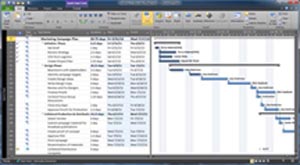This is the eighth installment in our series on best practices in project management.
Time is of the EssenceIn the last article, we mentioned that there are three primary constraints that can affect the success of any project: cost, time, and scope. We began our focus on the time element of the three constraints, discussing factors involved in developing a project schedule and a Gantt chart. Each task will have dependencies–either tasks that need to be completed before starting the next, tasks that need to start concurrently, tasks that need to finish concurrently, or tasks that cannot finish until the next task is started. In addition, there are three different types of dependencies that we discussed: mandatory, discretionary, and external. The PERT TechniqueOnce the task list has been finalized and the dependencies have been identified, the schedule can be developed using Schedule Network Analysis Techniques. These techniques include: PERT (Program Evaluation Review Technique) review, critical path method, schedule compression, what-if scenario analysis, and critical chain method. PERT is a technique of using estimates to determine the estimated duration of a task, standard deviation, and variance in activity. Utilizing a set of formulas and estimates for the optimistic (O), pessimistic (P), and most likely (M) duration of the activity, one can get an estimate of the duration with the standard deviation. The formulas are as follows:
So, if an activity is anticipated to have the following duration: (O) – 60 hours, (M) – 80 hours, (P) – 100 hours, the formula would be as follows: (100+4(80)+60)/6 or (100+320+60)/6, which is 480/6=80 hours. The standard deviation is (100-60)/6 or 40/6= 6.67 The activity variance is [(100-60)/6]^2 or 6.67^2, which is 44.44 In this case, the task is expected to take 80 hours +/-6.67 hours. To figure out the complete time of the project, simply figure out what time is required for each project task and the standard deviation for each task. These can be plugged into the project plan, along with the dependencies to determine the time estimated for the complete project. PERT is the first of the tools that should be utilized to determine the timeframe of the project. Creating an accurate timeframe for the project will allow the organization to accurately schedule resources and control costs. In the following issue, we will look at the critical path method, a key tool to determining the overall timeframe of the project. For more information or if you have questions, please contact Paul Rupple, PMP at (847) 446-2285, or by email. |

|




